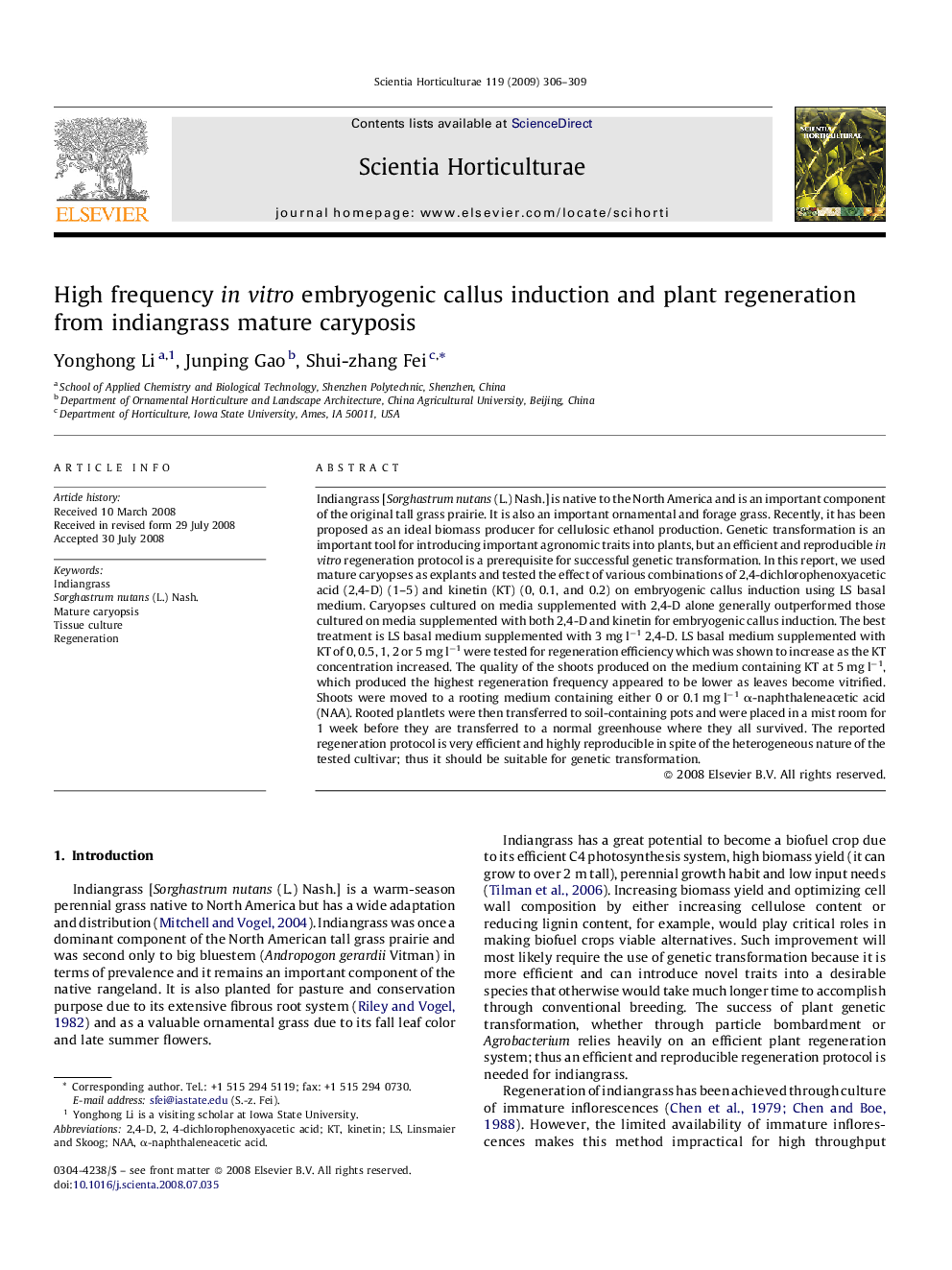| Article ID | Journal | Published Year | Pages | File Type |
|---|---|---|---|---|
| 4569168 | Scientia Horticulturae | 2009 | 4 Pages |
Abstract
Indiangrass [Sorghastrum nutans (L.) Nash.] is native to the North America and is an important component of the original tall grass prairie. It is also an important ornamental and forage grass. Recently, it has been proposed as an ideal biomass producer for cellulosic ethanol production. Genetic transformation is an important tool for introducing important agronomic traits into plants, but an efficient and reproducible in vitro regeneration protocol is a prerequisite for successful genetic transformation. In this report, we used mature caryopses as explants and tested the effect of various combinations of 2,4-dichlorophenoxyacetic acid (2,4-D) (1-5) and kinetin (KT) (0, 0.1, and 0.2) on embryogenic callus induction using LS basal medium. Caryopses cultured on media supplemented with 2,4-D alone generally outperformed those cultured on media supplemented with both 2,4-D and kinetin for embryogenic callus induction. The best treatment is LS basal medium supplemented with 3 mg lâ1 2,4-D. LS basal medium supplemented with KT of 0, 0.5, 1, 2 or 5 mg lâ1 were tested for regeneration efficiency which was shown to increase as the KT concentration increased. The quality of the shoots produced on the medium containing KT at 5 mg lâ1, which produced the highest regeneration frequency appeared to be lower as leaves become vitrified. Shoots were moved to a rooting medium containing either 0 or 0.1 mg lâ1 α-naphthaleneacetic acid (NAA). Rooted plantlets were then transferred to soil-containing pots and were placed in a mist room for 1 week before they are transferred to a normal greenhouse where they all survived. The reported regeneration protocol is very efficient and highly reproducible in spite of the heterogeneous nature of the tested cultivar; thus it should be suitable for genetic transformation.
Keywords
Related Topics
Life Sciences
Agricultural and Biological Sciences
Horticulture
Authors
Yonghong Li, Junping Gao, Shui-zhang Fei,
